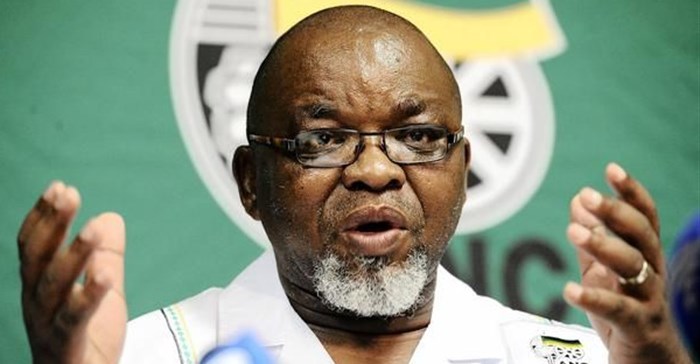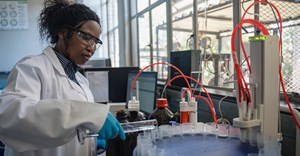Mandela Mining Precinct to boost mining sector

The Mandela Mining Precinct will support local innovation to provide technological solutions to the challenges faced by the mining industry in South Africa. It currently employs around 70 staff including young professionals and interns at the Council for Scientific and Industrial Research (CSIR) premises in Melville.
Mineral Resources Minister Gwede Mantashe said the mining sector is an important sector in the country’s economy even though its contribution to the gross domestic product (GDP) over the years has declined.
“We are conscious of the fact that the contribution of mining in GDP has fallen dramatically from 21% in 1970,” said Mantashe. The mining sector contributed less than 10% of the GDP in 2017.
However, while the sector contributes little to the GDP, it contributes roughly 60% of foreign earnings for the country.
“Mining is quite an important sector, we must strengthen it and build on it, modernise and grow it,” he said, adding that in the age of technological advancement, mining cannot be left behind.
Mantashe toured the site belonging to the Department of Science and Technology with his colleague Science and Technology Minister Mmamoloko Kubayi-Ngubane.
He said he was excited about the project which will help modernise the sector.
The precinct is a collaborative effort between the Department of Science and Technology, through its entity the CSIR, the Minerals Council South Africa (previously known as the Chamber of Mines) and the Universities of Johannesburg, Pretoria and Witwatersrand.
It is in line with government’s goal of increasing investment in research and development (R&D).
Currently South Africa spends 0.7% on research and development and has fallen behind its peers in terms of advancing it.
Mantashe said government aims to up this to at least 1.5% of GDP. This can only happen with a practical programme – the precinct being one of them.
“The countries that were at the same level of development as us, including South Korea, left us behind because they invested in education, research and development. The more we invest in research and development, the better,” he said.
This sentiment was shared by Kubayi-Ngubane.
“You can’t build the future of the country with research and development with that percentage [0.7%]. You can look at countries that invested in R&D, their economies are thriving. For us to have a better economy, a better country, R&D investment is a must,” she said.
Kubayi-Ngubane said the precinct represents a key milestone for R&D and emphasised that government provides companies with tax incentives for investing in R&D.
Technology to solve current challenges
“Technology is important for us to be able to solve the challenges we have,” she said, adding that it will not reduce jobs.
The precinct’s co-director and chairperson of Mining Equipment Manufacturers of South Africa (Memsa) Alistair Macfarlane said the centre is about advancing the mining cluster.
“It’s not just about technology but about people, processes and technology. Everything we do is people centred, what we do is always to do with people, our thrust is on modernisation not pure mechanisation,” he said, of the centre that has been occupied for close to two years.
He said the precinct receives funding of around R100m per annum.
The precinct which is also one of the outcomes of Mining Phakisa, announced by former President Jacob Zuma in his State of the Nation Address in 2014. It was designed to fast-track the implementation of solutions to critical development issues. It is based on Malaysia’s Big Fast Results Methodology.
The mining leg of Operation Phakisa is aimed at identifying key constraints to investment in and growth of the industry as well as develop a shared vision and growth strategy for the long-term development and transformation of the sector.
Source: SAnews.gov.za
SAnews.gov.za is a South African government news service, published by the Government Communication and Information System (GCIS). SAnews.gov.za (formerly BuaNews) was established to provide quick and easy access to articles and feature stories aimed at keeping the public informed about the implementation of government mandates.
Go to: http://www.sanews.gov.za














